A sump pump hole is an essential part of many basements, designed to collect and remove excess water, preventing flooding and water damage. However, leaving the hole uncovered can pose safety risks, such as tripping hazards or debris falling into the pit.
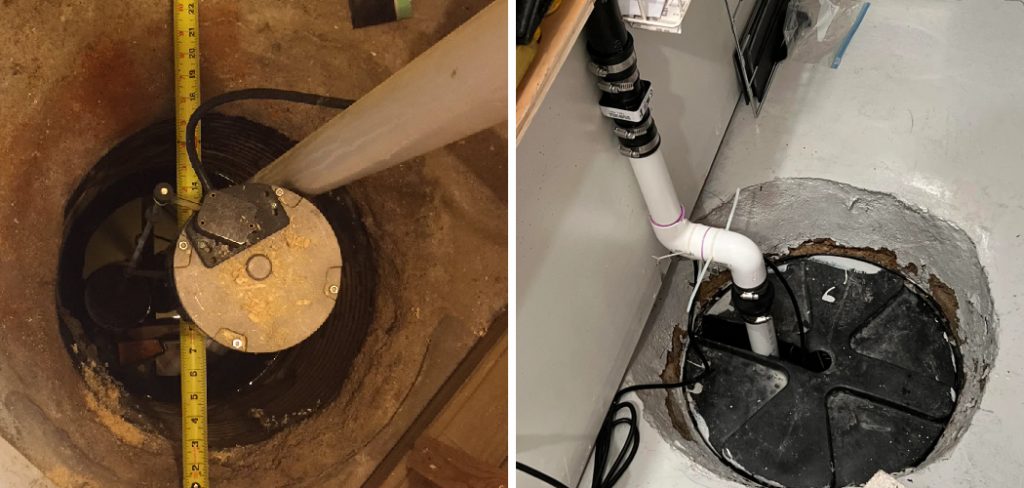
Covering your sump pump hole not only enhances safety but also keeps the system free of obstructions and improves the overall appearance of the area. This guide will walk you through the benefits of how to cover sump pump hole effectively.
Understanding the Sump Pump Hole
The sump pump hole, often referred to as the sump pit, is a crucial component of a basement’s drainage system. It serves as the collection point for water that seeps into the basement, typically from the foundation or surrounding soil. The sump pit is intentionally designed to be the lowest point in the basement, ensuring that water flows directly into it rather than pooling on the floor.
A properly functioning sump pump then removes the accumulated water, preventing moisture buildup, structural damage, and potential mold growth. Understanding how your sump pump hole works is key to maintaining a dry and safe basement environment. Regular maintenance and appropriate coverage are vital to ensure the efficiency and longevity of the system.
Safety Considerations
When dealing with a sump pump system, safety should always be a priority to avoid potential hazards. Ensure that the sump pump is plugged into a Ground Fault Circuit Interrupter (GFCI) outlet to reduce the risk of electrical shock, especially in damp or wet conditions. Avoid overloading electrical circuits and keep the area around the sump pump free of obstructions to allow proper ventilation and access for maintenance.
If the sump pump requires manual inspection or repairs, always disconnect the power source beforehand. Additionally, take care when lifting or handling the sump pump, as it may be heavy or contain sharp components. By following these safety precautions, you can protect both the functionality of the system and the well-being of individuals in your home.
10 Methods How to Cover Sump Pump Hole
1. Use a Pre-Made Sump Pump Cover
One of the most straightforward and popular solutions is to purchase a pre-made sump pump cover specifically designed for this purpose. These covers are usually made from durable plastic or heavy-duty polyethylene, designed to fit snugly over the sump basin opening.
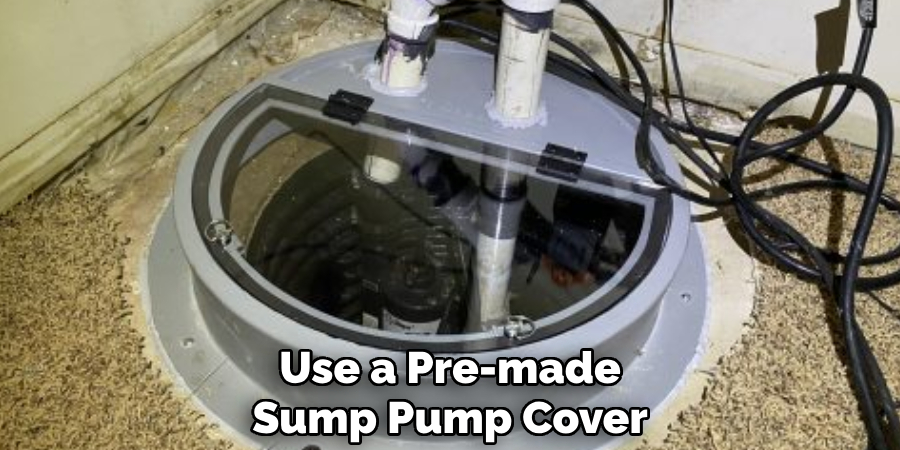
They typically have a central removable lid or hatch that allows easy access for pump maintenance without removing the entire cover. These covers are excellent because they provide a tight seal, preventing odors, dirt, and pests from entering the basement while ensuring safety by covering the open hole completely. Installation is often as simple as placing the cover over the hole and securing it with screws or clamps.
2. Construct a Wooden Frame with a Removable Lid
For a more customizable and aesthetic approach, building a wooden frame around the sump pump hole can work well. This involves cutting plywood or treated lumber to create a box-like frame that fits over or around the hole.
The top of this frame can be a removable wooden lid, allowing easy access for maintenance while securely covering the hole when closed. The wood can be painted or stained to match the basement floor or walls, making it visually less intrusive. This method is especially popular for homeowners who want a more natural look or plan to cover the area with carpet or flooring later.
3. Use a Metal Sump Pump Cover
Metal covers are highly durable and provide a long-lasting solution for sump pump holes, especially in basements that see heavy foot traffic. Covers made from steel or aluminum offer superior strength and can be custom-made or purchased to fit your sump pump hole dimensions. These metal covers often come with ventilation slots or holes to allow air circulation, which helps prevent moisture buildup around the pump.
They also support weight well, making them safe to walk on or place furniture over. Installation involves securing the metal plate firmly to the floor, ensuring it does not shift or create gaps.
4. Seal with Concrete or Cement
For a more permanent and heavy-duty fix, sealing the sump pump hole with concrete or cement around a fitted cover or frame can be an effective solution. This involves installing a cover—usually a rigid plastic or metal plate—first, then pouring concrete around the edges to bond the cover to the floor.
The concrete seal ensures that no debris or water can seep under the cover, and it firmly anchors the cover in place. This method is particularly useful in utility rooms or basements where aesthetics are less of a concern, and a durable, water-tight seal is the priority.
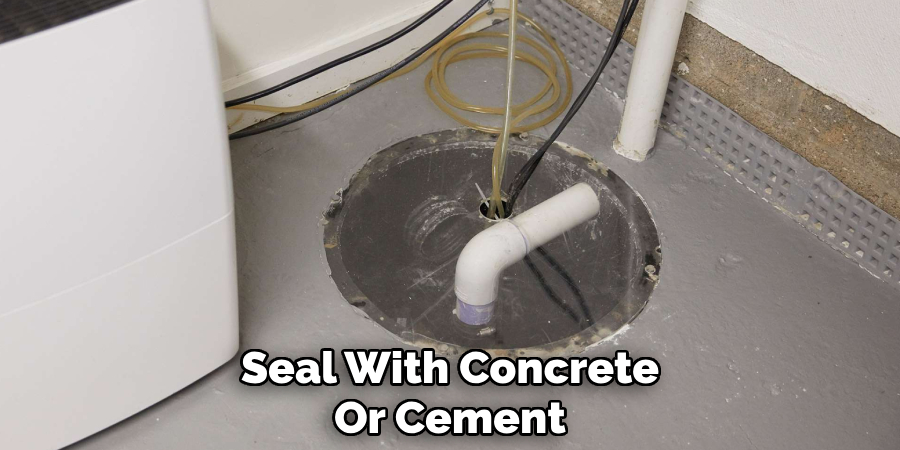
5. Install a Custom Acrylic or Polycarbonate Cover
Clear acrylic or polycarbonate covers are an innovative option for those who want to keep the sump pump visible while still protecting the hole. These covers are cut to size and fit securely over the sump basin.
Their transparency allows for easy visual inspection of the pump without removing the cover, saving time on maintenance checks. Acrylic covers are also lightweight, easy to clean, and resist moisture well. This method combines safety with convenience, providing a sleek, modern look that fits well in contemporary basements or workshops.
6. Use a Rubber or Foam Gasket Seal Cover
Sometimes, a flexible and snug-fitting solution is needed to deal with uneven sump pump hole edges or slight size variations. Rubber or foam gasket seal covers can be custom cut to fit the opening and act as a seal to prevent odors, dirt, and insects from coming through. These covers are often combined with rigid lids to create a secure and tight fit.
The gasket material compresses to fill gaps and reduce vibrations, which can be beneficial if your sump pump creates noise or movement. This method is especially effective in older homes where the sump basin edges may not be perfectly shaped.
7. Cover with Heavy-Duty Plastic Sheeting and Weighted Frame
In temporary situations or when a quick fix is needed, heavy-duty plastic sheeting can be stretched over the sump pump hole and held down by a weighted frame or heavy objects. This method is not recommended as a long-term solution but can prevent immediate hazards or debris falling into the hole during renovations or pump replacement.
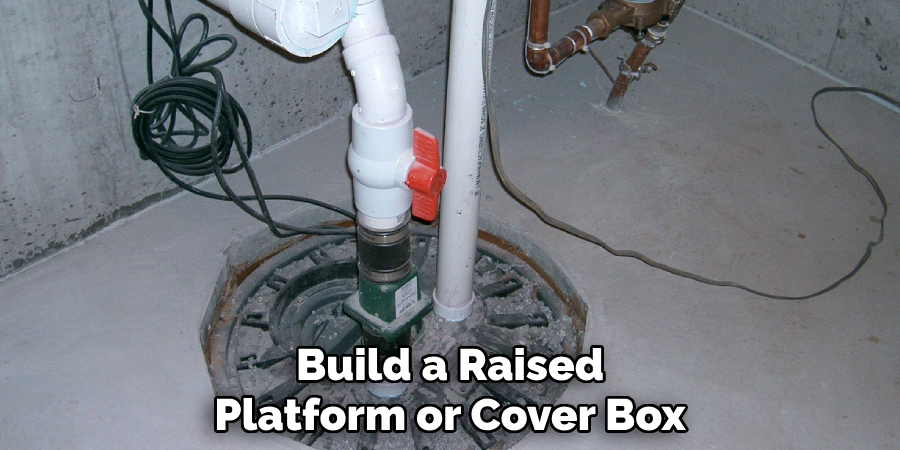
The plastic sheeting acts as a barrier against moisture and pests, while weights ensure it doesn’t blow away or move easily. When time allows, a more permanent cover should replace this setup.
8. Build a Raised Platform or Cover Box
If your sump pump is located in a high-traffic area or you want to incorporate storage or functional space, building a raised platform or box that covers the sump pump hole is an excellent idea. This method involves constructing a sturdy box or platform that sits over the hole, often with ventilation and an access panel for pump maintenance.
The platform can be finished with paint, tile, or carpet to match the room decor, effectively turning a functional necessity into an integrated part of your basement design. This approach also prevents accidental trips or falls by raising the floor level around the hole.
9. Use a Ventilated Plastic Lid with Sealant
Ventilation is important to prevent moisture buildup and mold growth around your sump pump. Some covers come with small vents or can be modified by drilling tiny holes to allow airflow while still covering the hole tightly.
To ensure no dirt or water leaks through the edges, silicone or waterproof sealant can be applied around the perimeter of the cover once it is in place. This method balances the need for airflow with a secure, sealed barrier and is suitable for humid or poorly ventilated basements.
10. Incorporate a Drainage Channel with Cover
In more advanced sump pump setups, a drainage channel or trench is installed around the sump basin to direct excess water. In these cases, the sump pump hole may be larger or irregularly shaped. Covering such holes requires custom solutions that incorporate both a sturdy cover and drainage management.
Installing a grate or slotted cover over the drainage channel, combined with a solid cover for the sump basin itself, ensures water flows properly while preventing accidental falls or debris entry. This method is ideal for homes with significant water management needs or professional sump systems.
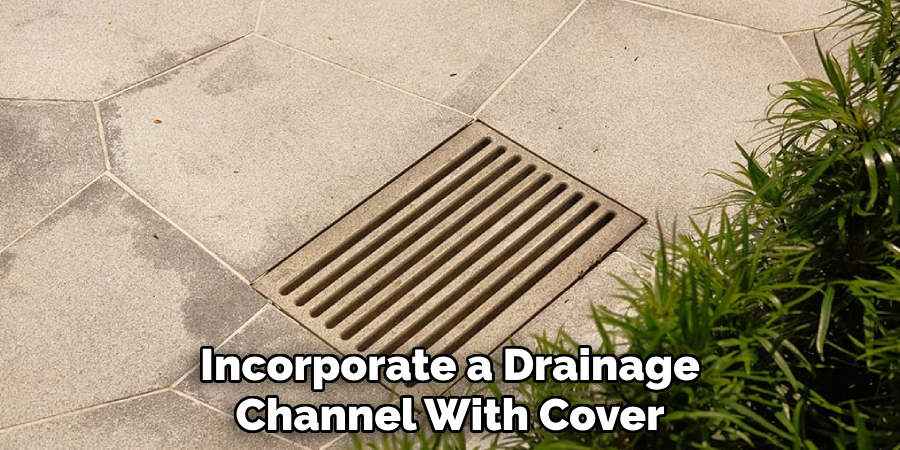
Conclusion
Covering your sump pump cover ideas is an important part of maintaining a safe, clean, and efficient basement environment. Whether you choose a simple plastic lid, a sturdy metal plate, or a custom-built wooden box, the key is to ensure the cover fits securely, prevents debris and pests, allows for pump access, and ideally promotes airflow to avoid moisture problems.
Temporary fixes like plastic sheeting can help in emergencies, but a permanent, well-fitted cover is essential for long-term safety and functionality. Consider your basement’s layout, your aesthetic preferences, and your budget to select the best method. Thanks for reading, and we hope this has given you some inspiration on how to cover sump pump hole!
About the Author
Adrian Green is a passionate woodworking enthusiast who has dedicated his life to the craft of woodworking. From his early days working alongside his father in the family woodworking shop, Adrian has honed his skills and developed a deep love for creating beautiful, functional pieces with his hands. As the voice behind The Woodenify Blog, he shares his knowledge, tips, and inspiration with fellow woodworkers of all skill levels, helping them build confidence in their abilities while learning new techniques.
Professional Focus
- Specializes in DIY woodworking projects, from furniture making to home décor.
- Provides step-by-step guides, tips, and practical tutorials for woodworkers at any skill level.
- Focused on empowering readers with confidence and knowledge through easy-to-follow instructions and hands-on techniques.
- Passionate about building a community where makers can share, learn, and grow together in the world of woodworking.
Education History
University of Craft and Design – Bachelor of Fine Arts (BFA) in Woodworking and Furniture Design
Woodworking Apprenticeships – Gained extensive hands-on experience through various workshops and mentorships with seasoned craftsmen, refining carpentry and furniture-making skills.
Expertise
- DIY woodworking, carpentry, furniture making, and home décor projects.
- Creating clear, accessible tutorials and guides for beginner to advanced woodworkers.
- Helping readers experience the satisfaction and fulfillment of turning raw materials into stunning finished products.
